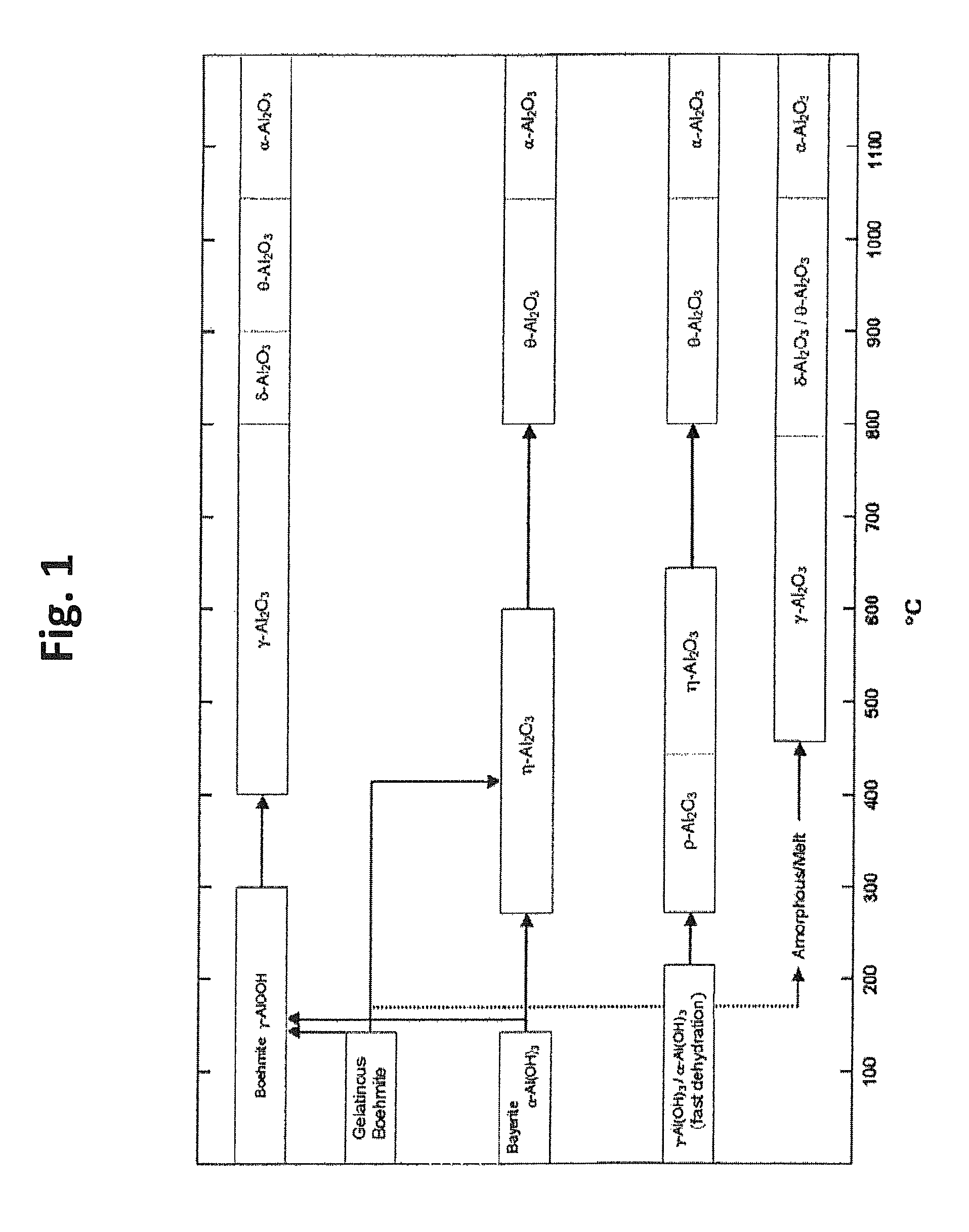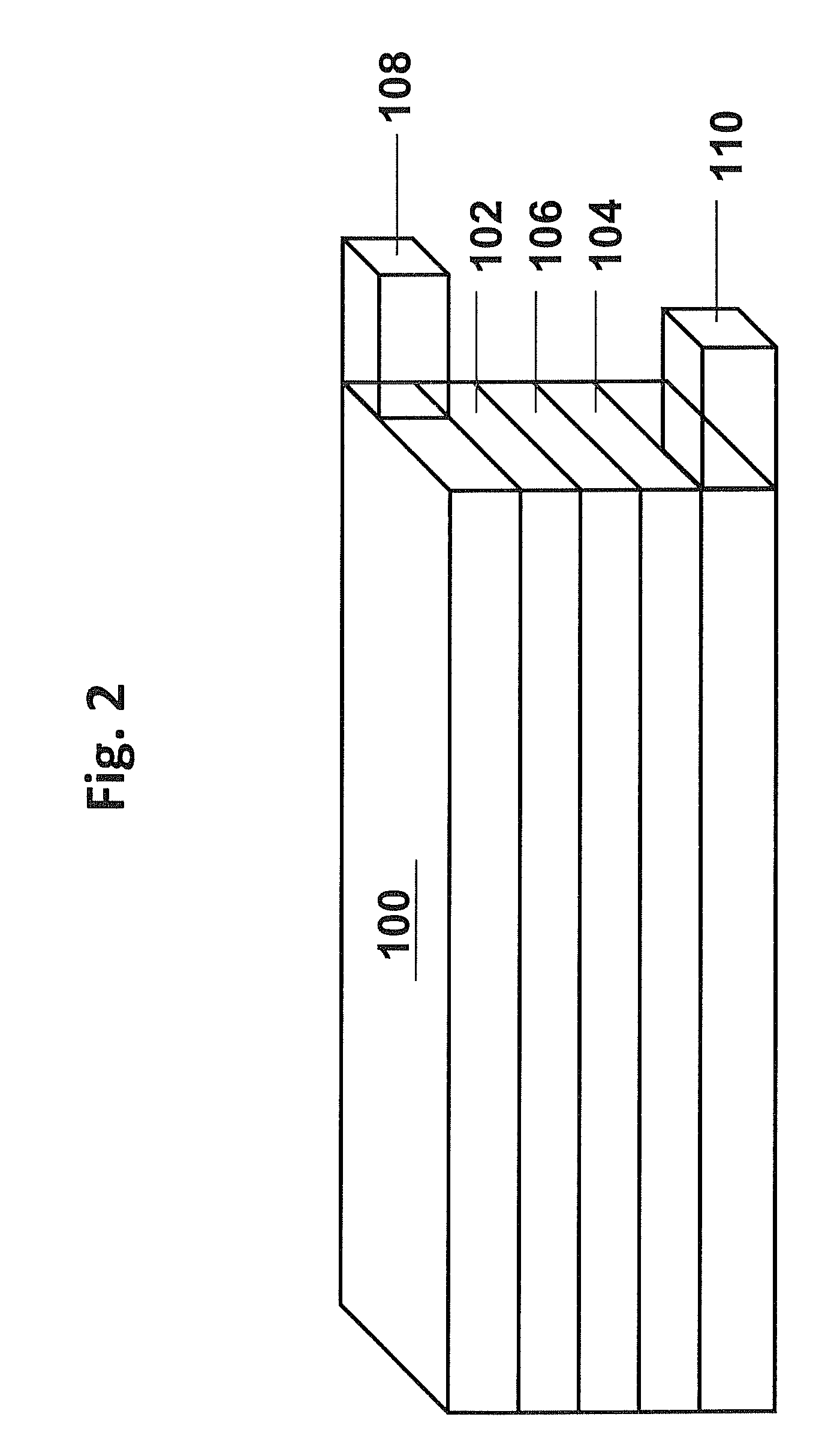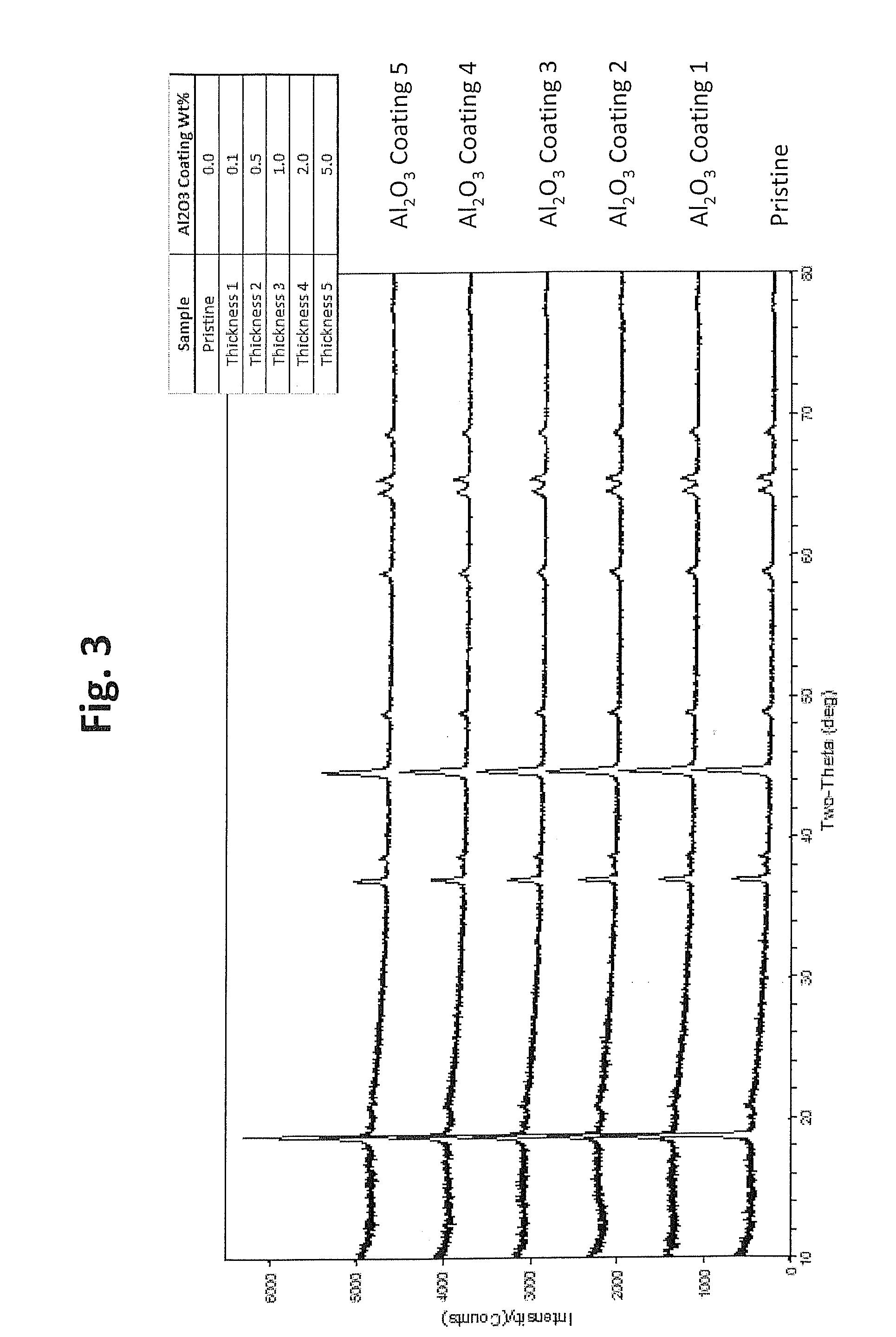Metal oxide coated positive electrode materials for lithium-based batteries
a positive electrode and lithium-ion battery technology, applied in the direction of cell components, electrochemical generators, nickel compounds, etc., can solve the problems of low energy density of battery cells and no significant improvement in energy density
- Summary
- Abstract
- Description
- Claims
- Application Information
AI Technical Summary
Benefits of technology
Problems solved by technology
Method used
Image
Examples
example 1
Synthesis of the Lithium Metal Oxide Active Material
[0100]This example demonstrates the formation of a desired positive electrode active material using a carbonate or hydroxide co-precipitation process. Stoichiometric amounts of metal precursors were dissolved in distilled water to form an aqueous solution with the metal salts in the desired molar ratios. Separately, an aqueous solution containing Na2CO3 and / or NH4OH was prepared. For the formation of the samples, one or both solutions were gradually added to a reaction vessel to form metal carbonate or hydroxide precipitates. The reaction mixture was stirred, and the temperature of the reaction mixture was kept between room temperature and 80° C. The pH of the reaction mixture was in the range from 6-12. In general, the aqueous transition metal solution had a concentration from 1 M to 3 M, and the aqueous Na2CO3 / NH4OH solution had a Na2CO3 concentration of 1 M to 4 M and / or a NH4OH concentration of 0.2-2M. The metal carbonate or hy...
example 2
Coating with Al2O3
[0107]This example describes the formation of an aluminum oxide coating on the lithium rich positive electrode active materials from Example 1 with the formula of sample 1 from Table 3. The aluminum oxide surface coating was formed using an aluminum hydroxide precipitation reaction followed by calcination. Generally, for a coating a selected amount of aluminum nitrate was first dissolved in the appropriate amount of water to form a solution of aluminum nitrate. To this solution of aluminum nitrate, the lithium metal oxide (LMO) particles from Example 1 were dispersed under constant stirring to form a well-dispersed mixture. To the well-dispersed mixture, an appropriate amount of ammonium hydroxide was added drop-wise resulting in the precipitation of aluminum hydroxide to coat the LMO particles. After the addition of ammonium hydroxide, the mixture was heated roughly at 60° C. for a period of time ranging from 2 to 10 h. Subsequently, the mixture was filtered, and...
example 3
Battery Performance with Aluminum Oxide Coated Materials with Selected Amounts of Coating
[0111]This example describes the performance of the aluminum oxide coated materials in coin cell batteries in which results are obtained with different amounts of coating material to evaluate battery performance as a function of the amount of aluminum oxide coating material.
[0112]To test the performance of the materials, the lithium metal oxide (LMO) powders with or without an aluminum oxide coating from Example 2 with selected amounts of coating material were mixed thoroughly with acetylene black (Super P™ from Timcal, Ltd, Switzerland) and graphite (KS 6™ from Timcal, Ltd) to form a homogeneous powder mixture. Separately, Polyvinylidene fluoride PVDF (KF1300™ from Kureha Corp., Japan) was mixed with N-methyl-pyrrolidone NMP (Sigma-Aldrich) and stirred overnight to form a PVDF-NMP solution. The homogeneous powder mixture was then added to the PVDF-NMP solution and mixed for about 2 hours to for...
PUM
| Property | Measurement | Unit |
|---|---|---|
| weight percent | aaaaa | aaaaa |
| weight percent | aaaaa | aaaaa |
| weight percent | aaaaa | aaaaa |
Abstract
Description
Claims
Application Information
 Login to View More
Login to View More - R&D
- Intellectual Property
- Life Sciences
- Materials
- Tech Scout
- Unparalleled Data Quality
- Higher Quality Content
- 60% Fewer Hallucinations
Browse by: Latest US Patents, China's latest patents, Technical Efficacy Thesaurus, Application Domain, Technology Topic, Popular Technical Reports.
© 2025 PatSnap. All rights reserved.Legal|Privacy policy|Modern Slavery Act Transparency Statement|Sitemap|About US| Contact US: help@patsnap.com



